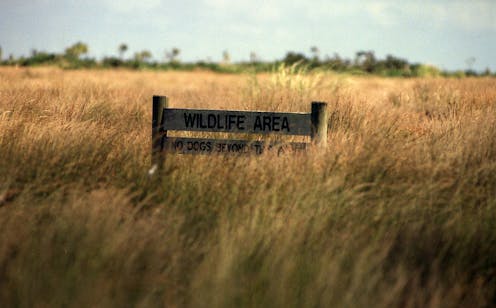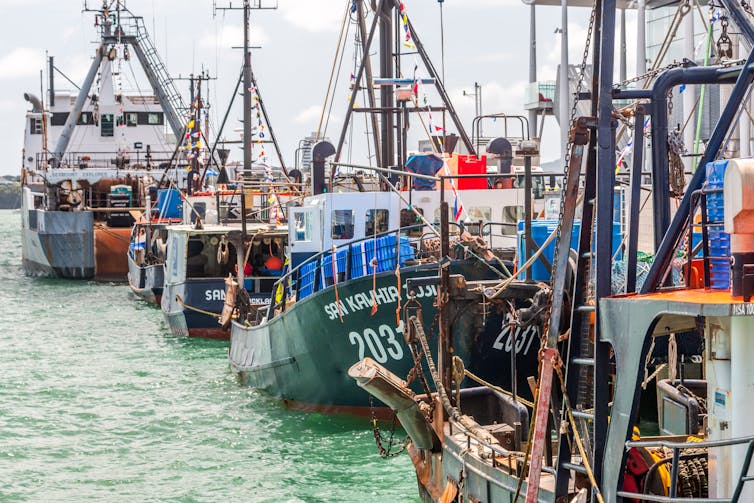
Nature in Aotearoa New Zealand is in serious trouble. With many of our species and habitats at risk of disappearing forever, the government’s 2020 biodiversity strategy sets the scene in stark terms:
Despite all that we are doing to try to protect and restore habitats and assist species, Papaptūānuku and Aotearoa New Zealand’s indigenous biodiversity is in crisis.
Around 4,000 species are threatened or at risk of extinction. Many plants and wildlife continue to decline or are just hanging on.
We need to act urgently to ensure that nature is healthy and thriving for its own sake and for current and future generations.
The strategy – full title, Te Mana o te Taiao: Aotearoa New Zealand Biodiversity Strategy 2020 – contains staggered goals for the years 2025, 2030 and 2050. The task of achieving those 2025 goals falls to the recently released Biodiversity Strategy Implementation Plan.
The government deserves credit for acknowledging a biodiversity crisis and responding with a plan. As the strategy acknowledges, there is much good work already happening to protect and restore habitats and species.
Unfortunately, comparing the strategy and the plan reveals a serious disconnect between important goals and the associated actions.
Missing in action
In keeping with the government’s wish that the plan be a living document, we identify fundamental issues that need to be urgently addressed if we’re to avoid sleepwalking into a biodiversity crisis.
For example, one of the biodiversity strategy’s 2025 goals states:
The most ecologically damaging pollutants (eg. excess nutrients, sediment, biocides, plastics, light and sound) and pollutant sources have been identified, and an integrated plan for their management is in place.
Yet the plan merely refers back to existing resource management instruments, despite the failure of these to prevent the proliferation of ecologically damaging pollutants such as nitrates or pesticides.
Similarly, another 2025 goal sates:
Environmental limits for the sustainable use of resources from marine ecosystems have been agreed on and are being implemented.
The plan then refers to a “best practice framework” for aquaculture, the implementation of the existing quota management system, the Fisheries Amendment Bill, and the forthcoming Natural and Built Environments Act. None of these actions involves the agreement and implementation of environmental limits for marine ecosystems by 2025.
Other core goals around marine bycatch, freshwater fisheries and ecosystem restoration also suffer from similar disconnects between aspiration and action. To meet these key goals, the plan should be updated with concrete actions that directly align with the strategic goals.

Beyond business as usual
Around two-thirds of the plan represents measures already in place. While many are targeted at the 2025 goals and will obviously have value, it’s clear business as usual has led us to the current crisis.
Addressing the scale of the crisis demands a step-change in our approach to biodiversity protection and conservation. Fundamental to that is moving beyond business as usual, and for the government to produce a set of quantifiable targets and limits for biodiversity conservation.
The current biodiversity strategy “goals” are vague and hard to quantify – for example: “Significant progress has been made in protecting marine habitats and ecosystems of high biodiversity value.” Even with an agreed set of national indicators it will be difficult to know if goals have actually been met.
Read more: Bringing the tūī back to town – how native birds are returning to NZ’s restored urban forests
Instead, we must heed the call of scientists and produce smart national and regional biodiversity targets that clearly set out how much of an ecosystem, a species or a population we wish to sustain as a nation.
The strategy and plan do contain references to environmental limits in the freshwater and marine environments, as well as the work to introduce limits into the new Natural and Built Environments Act.
While this is welcome, it’s not clear from the plan that these will be dedicated biodiversity limits (the minimum we need for an ecosystem, species or population to survive), beyond which we cannot lawfully proceed.
Such limits, in theory, should prevent biodiversity continually being traded away for development, perhaps the key driver of biodiversity loss.
Read more: Why a sense of kinship is key to caring about the living world
Consensus on the crisis needed
With targets and limits in place, the Department of Conservation (DOC) should urgently review all legally protected land in Aotearoa New Zealand, to determine the extent to which it meets our target levels for ecosystems, species and populations. A similar review was done by Australian scientists in 2016.
Legal protections are vital, as habitats that aren’t legally protected are more likely to be cleared for land development. Where species or ecosystems are underrepresented on protected public and private land, the government should detail concrete actions to increase the levels of those ecosystems and habitats under protection.
A good starting point would be to examine where areas of stewardship land (ecologically significant land not currently managed by DOC) could be restored back to ecosystem health.
Underpinning all this is the political will and resourcing to make it happen. Already the strategy and plan have been through two governments, with maybe another to follow next year’s general election. DOC is massively under-resourced and facing a budget crisis.
To ensure the longevity of this work, perhaps what’s needed most is long-term cross-party support for urgently addressing the biodiversity crisis.
Without that support and funding, regardless of what the plan is on paper, the government won’t be able to take the big actions necessary to match the scale of our biodiversity crisis.
Matthew Hall is a Senior Researcher at the Environmental Law Initiative.
Allan Brent is Senior Legal Advisor to the Environmental Law Initiative.
This article was originally published on The Conversation. Read the original article.







